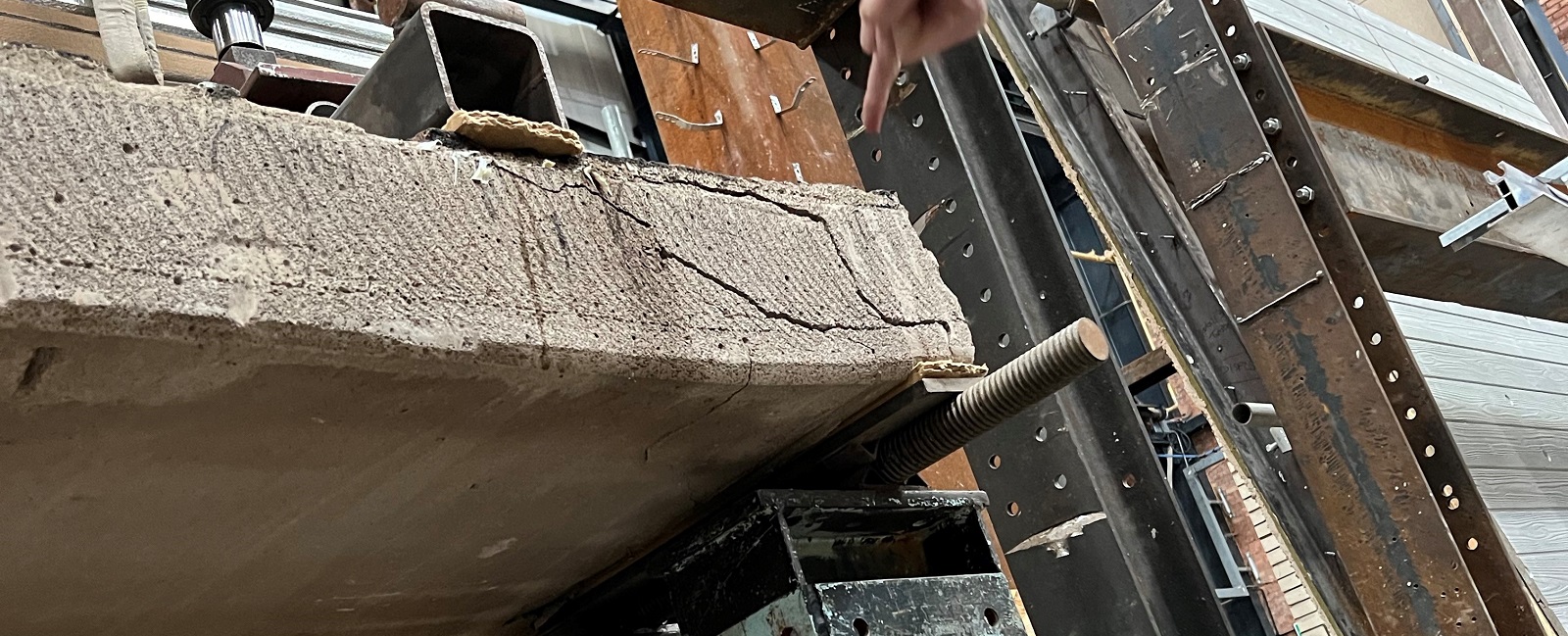The digital tool uses software, produced by academics within the University’s School of Architecture, Building and Civil Engineering, and thousands of images to detect any ongoing deterioration within RAAC – highlighting the location and proposed lifespan of cracks within the concrete.
Professor Chris Gorse says the project came about following work identifying RAAC faults within NHS buildings. He said there was no unified approach to how data was being collected: “We realised that we needed to start collecting data that was less based on the manual surveying processes and more to do with what could be captured as real and accurate data. So, we started to provide the estates with a systematic process for collecting photographic records. Through this imagery you can start to recognise what cracks are in place and, in time, we would be able to recognise individual cracks and see if they increase or decrease.
“At the moment, the whole country is inspecting its RAAC buildings, and the advice is that if RAAC is in a poor condition that you keep inspecting it monthly or every three months, if it's a medium risk you're inspecting every six months or every year if it’s low risk. Some NHS trusts have got large teams of people dedicated to inspecting RAAC in their buildings. Any one of those processes are extremely time consuming and, as there are a lot of planks, you may start to get people not inspecting the RAAC effectively. This tool provides a far superior process to what’s currently being used - reducing the time and number of people involved drastically, allowing us to better focus those resources.”
With the breadth of AI being so vast, it was important for the research team to teach it which of the many thousands of images showed cracking and which didn’t – emphasising the difference between things such as hairline cracks and spider webs. Dr Karen Blay says they’ve proven the whole RAAC maintenance process can be fastened and simplified: “This is a code that can be run from any laptop and used by anyone. For instance, if you have a hundred pictures that you have picked up from surveying and then you run it through our code, the code will separate the images that show cracking from those that don’t. With the addition of timestamps, we can then capture how these planks are being impacted over time. It allows us to be as objective as possible.”
With the process easy to use, Dr Blay stressed that the tool should work hand in hand with manual checks and, for the time being, not act as a replacement: “The tool is currently 95% accurate so you’ll still need manual checks in place but what it does is increase the data’s objectivity. At the moment we wouldn't want it to replace the manual process because there are a lot of conditions of RAAC that may be different to what we’ve already seen. It’s important we continue to gather more information before assessing the situation in the future. It’s possible that in years to come we could well have a situation where we've got something much more automated surveying RAAC and reducing the time required for inspection even further. For now, we’ve been able to speed up the process of inspection whilst providing a backup system in case anything's missed.”
She concluded that, with Britain’s building stock being one of the oldest globally, this tool could really assist in the long term: “Without a smart asset management system you really can't manage your building stock and apply something like the Building Safety Act properly. If we are to monitor buildings that are 30, 50, 100 years old and start to build up information on the materials and the properties of those buildings and then extend them for another 50 years we've really got to have a way to create a transferable knowledge pool. The only way that seems possible is through a digital interface and a digital asset management system. This tool is the bedrock of that system.”
The experienced team at Loughborough University, of which Professor Gorse and Dr Blay are a part, are leaders on research into RAAC. These inspection processes benefit hugely from the state-of-the-art laboratories and modelling capabilities available to them at the University.
